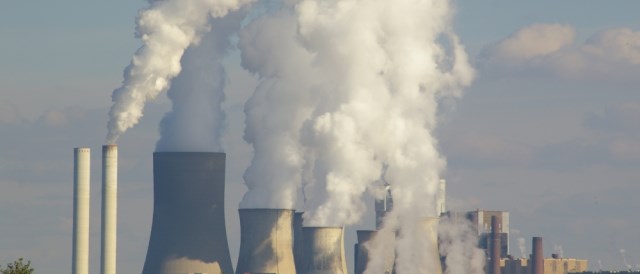At the beginning of the month, Germany’s Focus Magazine reported (in German) that the German Network Agency plans to allow 12 conventional power plants to be shut down. Craig Morris reports.

Increasingly uncompetitive in Germany: Coal Power. (Photo by richard.brand, CC BY-NC-SA 2.0)
Remember all the talk about blackouts resulting from the sudden shutdown of eight nuclear plants in Germany in the spring of 2011? We haven’t had any shortfall of power supply yet – quite the contrary, German power exports are at a record high. So the recent concern has shifted towards charges that Germany is building coal.
A few months ago, we addressed these concerns by showing that, since Fukushima, Germany has reduced the number of planned coal plants by six, not added more; the plants being completed now were planned some six years ago.
Indeed, the new record-low wholesale prices spell doom for all conventional power plants, which are running at ever lower capacity factors. Utilities have responded by applying to have their plants shut down. They cannot do so on their own; first, Germany’s Network Agency has to give its approval based on an estimation of how critically a given power plant is needed to ensure supply quality.
At present, some 28 power plants with a collective capacity of 7,000 megawatts – roughly equivalent to the capacity shutdown in Chancellor Merkel’s sudden nuclear phaseout in March 2011 – have been submitted for decommissioning. In comparison, German power consumption peaks at around 80,000 megawatts in November evenings, and the country currently has around 90,000 megawatts of conventional capacity installed. The removal of an additional 7,000 would therefore put the country’s conventional capacity close to peak power demand – an unprecedented situation.
In some cases, the firms placing these submissions really just want money; if the Network Agency finds that the power plants are to crucial to be shut down (usually, it’s a matter of geography), the firms can demand special compensation to ensure profitability. Essentially, these are capacity payments, though Germany currently has no proper capacity market. Instead, the Network Agency merely determines how many gigawatts of “reserve capacity” will receive special compensation for remaining on standby. The head of the Network Agency told German economics daily Handelsblatt at the end of October that he is “very skeptical” of capacity markets.
The specific identity of the 12 power plants that will be allowed to shut down has not yet been published, but we do know that all of them are in the north, where most installed wind capacity is also located. Five of the other 16 are located in the south and are likely to be declared “system-relevant,” meaning they would not be decommissioned. The other 11 power plants are still being reviewed.
The German energy transition is truly undergoing a transitional phase, and this announcement may be the first in a long line of news over the next few decades about renewable power actually offsetting conventional capacity. If so, Germany will have demonstrated how reliable renewable power can be – provided, of course, that the power stays on.
Craig Morris (@PPchef) is the lead author of German Energy Transition. He directs Petite Planète and writes every workday for Renewables International.